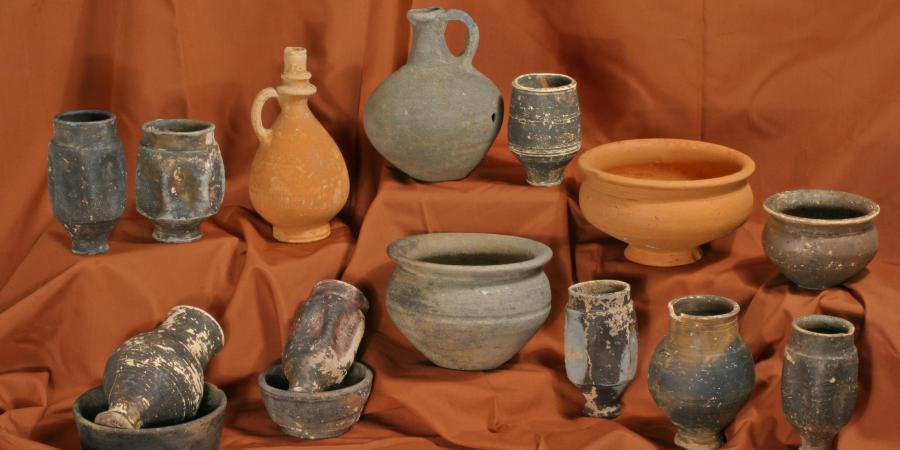Black Burnished Ware
Making a pot has always been a science as well as an art. Fashions and tastes dictated what was thought valuable or beautiful, but we can learn a lot from the techniques and raw materials that were used, too.
Delving a little deeper into the science, we will join archaeologist and STEM ambassador, Grace, to find out more about Black Burnished Wares. Coiled by hand, these dark vessels are made from a grainy clay that can be rich in fragments of iron ores, flint, quartz, shale and mica.
Early Roman Pottery
When we think about the Roman conquest of Britain, many of us think of soldiers and battles, or of lavish villas and their famous underfloor heating which replaced life in draughty round houses. Did the Roman invasion of Britain really extend to a cultural take over?
Find out with author and Finds Manager, Rachael, about what the pottery actually tells us about the new ideas, processes and fashions that arrive in Britain with the Romans, and how the local craftsmen adapted to the new power in the land.
New Forest Ware
We fast-forward in time to the 3rdcentury AD – 200 years after the Roman conquest. By now, potters throughout the province produced high-quality pottery with a Romano-British style. One of the centres of pottery production was the area we now call The New Forest. It had all the natural resources needed for a thriving industry.
Making a Roman Pot
Have you ever thought about the person that made the Roman pot you can see in a museum display? It is sometimes easy to forget that every object had a maker. In fact, it is their individual choices, talents and sometimes fingerprints and makers’ marks that have survived across the centuries.
Meet Pottery Teacher, Malcolm. With his help, we can look at the techniques that were used to make pottery in Roman times: wedging, slabbing, throwing and coiling. While he is making pottery, he shares with us his perspective on the work of his ancient counterparts.
Go back to Archaeology Online Galleries page
